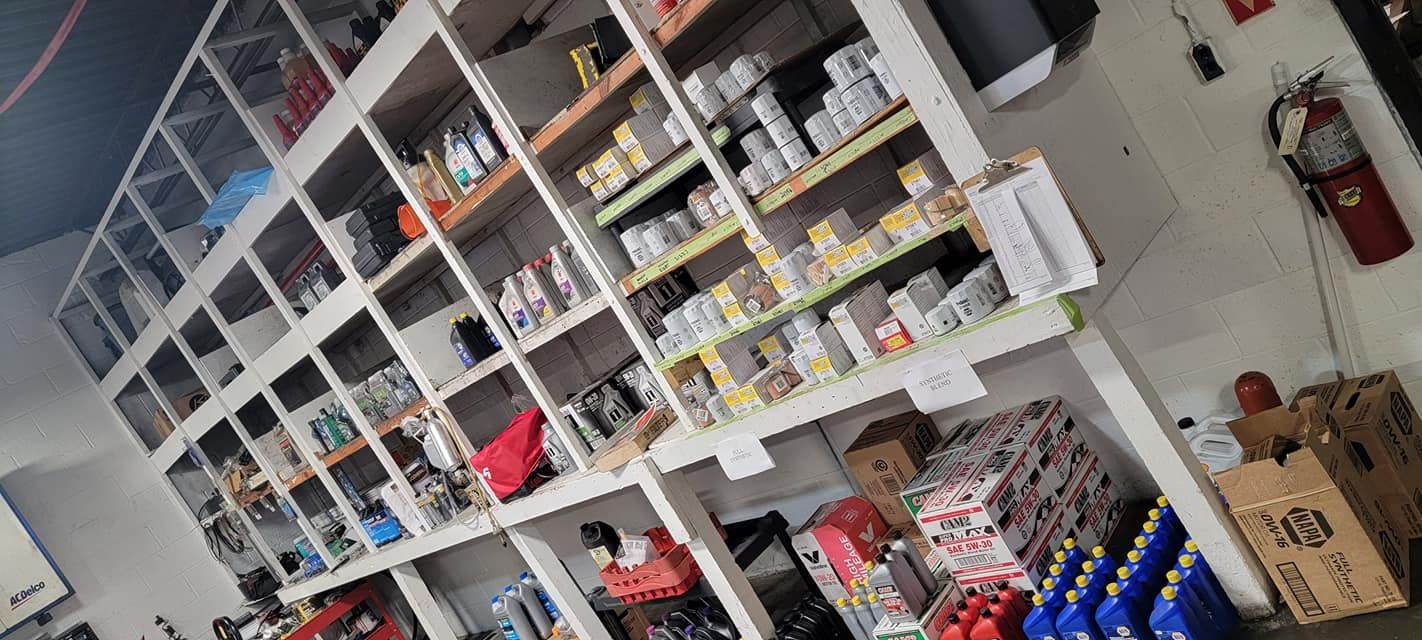Our Blog

When you bring your vehicle to 17th Street Automotive , you’re not just choosing an auto repair shop.... You’re choosing a local, community-centered small business that invests in people, technology, and the future of transportation. We understand that repair costs are an important part of your decision, and we want to share openly why our pricing sometimes differs from chain stores or big-box competitors and why that difference benefits YOU and your community. ⭐ Modern Cars Demand Modern Expertise Today’s vehicles are rolling computers. They contain: Hybrid and plug-in hybrid systems Full EV platforms High-voltage lithium batteries Artificial Intelligence ADAS calibrations (lane assist, blind spot, adaptive cruise, 360° cameras, radar, infrared sensors) Advanced HVAC systems with THREE phase AC compressors Brand specific technologies from American, European, Korean, Japanese, Chinese, and Australian manufacturers To safely and properly repair these systems, our team must constantly evolve. This means: Ongoing inperson and online training thru NAPA, Autozone, WorldPac, ATI, ATG, and many more! Certifications and mentorship programs (ASE, ATI, NAPA, TechNet, PROvantage, BDG Hampton Roads) Specialized tools and OEM level diagnostic equipment Annual software updates We do this so every YEAR, every MAKE, and every MODEL/SUB MODEL that drives into our bays is serviced with OEM level accuracy, right here in Virginia Beach. ⭐ Investing in Quality Means Investing in YOU Because we’re local, every improvement we make benefits our neighbors directly. We invest in: A fully equipped 10-bay repair center Premium parts with stronger warranties Advanced scan tools and EV/ADAS-capable equipment Higher insurance and liability coverage for your protection A free loaner vehicle fleet for our VIP customers Lifetime warranties and 3-year/36,000-mile NAPA nationwide coverage You’re not paying for “extra”—you’re paying for trust, safety, precision, and peace of mind. ⭐ Your Support Fuels Community Impact One of the most meaningful reasons to support a local small business is knowing that your dollars stay right here at home. When you choose 17th Street Automotive, you support: Local Heroes, our Military Personnel & First Responders Guns ’N Hoses hockey tournament Firefighter & first responder appreciation day Police donation car wash for fallen officers Donations to Virginia Beach Rescue Squad & VB Fire Foundation Dedicated first responder mural building Annual 9/11 memorial events Local Students & Education Mentorship programs with Virginia Beach high schools Partnerships with Virginia Beach City Public Schools (Model Partner accreditation) Collaboration with DARS rehabilitation programs Support for TRS Kids, Maverick Learning Center & Jonathan Cares Local Events & Culture Midnight car shows New Year’s celebrations Garage art shows with local artists Cornhole tournaments, giveaways & community block events Local Innovation We’re proud to collaborate with NAPA Gold, AutoZone PROvantage, Advance TechNet, and ATI coaching programs to keep Hampton Roads on the cutting edge of automotive service. When you choose us, you’re helping us fuel community programs that big-box chains simply don’t invest in. ⭐ Recognized Excellence You Can Trust We’ve proudly earned recognition not just for what we fix, but for how we serve: 2025 Virginia Beach Small Business of the Year – Hampton Roads Chamber of Commerce Outstanding Service Award – Virginia Beach Fire Fighters Association CoVaBiz: Best Repair Facility in Virginia Beach Accredited Model Partner – Virginia Beach City Public Schools 4.8 ★ Google Rating And many other certifications, awards, and community acknowledgments Small businesses thrive on reputation—and we work every day to earn the trust of the people who walk through our doors. So Why Do We Charge More? Because We Give More. When you support a local small business like ours, you’re choosing: ✔ A staff who knows you and cares about your family’s safety ✔ A team that reinvests in your community ✔ Highly trained experts who keep up with rapidly evolving vehicle technology ✔ Better parts, better warranties, and better long-term value ✔ A shop that stands behind its work long after you drive away You're not paying for a repair. You're supporting a mission—to uplift, educate, protect, and serve the community we call home. Thank You for Choosing Local. Thank You for Choosing 17th Street Automotive. Your trust enables us to keep raising the standard of automotive care in Virginia Beach. And that’s a responsibility we never take lightly.

When It Comes to Used Cars, We Inspect Them Like Our Family Will Drive Them A look inside 17th Street Automotive’s Pre‑Purchase Inspection process Buying a used vehicle can feel like a gamble. Was it maintained? Has it been in an accident? Are there hidden problems waiting to surprise you six months down the road? At 17th Street Automotive , our job is to remove as much of that uncertainty as possible. Our pre‑purchase inspection (PPI) is built around one simple principle: We inspect every vehicle as if we’re buying it for ourselves or for someone we love. Below is a clear breakdown of what we do, how we do it, and why it matters for you before you sign on the dotted line. 1. Full-System Diagnostic Scan: More Than Just a Check Engine Light Most shops will glance at the dash and, if there’s no warning light on, call it “good.” We go a lot deeper. We pull DTCs (Diagnostic Trouble Codes) from all modules Our technicians connect professional diagnostic equipment and scan every available control module (topography), including (as applicable): Engine control module (ECM/PCM) Transmission control ABS and traction control Airbag / SRS systems Body control module Infotainment and ADAS related modules (lane assist, adaptive cruise, etc.) Why this matters: Modern vehicles can store historical and pending trouble codes even when there are no visible warning lights. Those codes can reveal: Intermittent electrical issues (rare) Early signs of component failure Past problems that were cleared but never fixed properly You get a record of these codes in your inspection documentation so you can see exactly what we see. 2. TSBs, Recalls, and Service Campaigns: The Hidden Paper Trail We don’t just look at the car—we look at the information behind it. We pull and print manufacturer information: Technical Service Bulletins (TSBs) related to that year/model Recall notices and whether they’ve been addressed Service campaigns and known pattern failures We then highlight all open SAFETY recalls and campaigns and explain what they mean in plain language. Why this matters: TSBs and recalls tell you what the manufacturer already knows about common issues on that vehicle. If there’s a known transmission issue at a certain mileage, or a common failure in the electronics, you’ll know before you buy. 3. Exterior & Glass: Beyond Cosmetic Concerns A vehicle’s body tells a story. Our job is to read it. We inspect for: Previous body repairs or repainting (bondo filling) Signs of structural damage or poor collision repair Panel gaps or misalignments Rust starting on the body or around trim Condition of windshield, sunroof, and windows.... looking for cracks, chips, or delamination Why this matters: Body and glass issues affect more than looks. They can impact safety, resale value, and even how well advanced driver assistance systems (ADAS) function (many of them rely on cameras and sensors mounted behind the windshield). 4. Underbody & Structural Check: Where Problems Hide A lot of serious problems never show up at eye level. Underbody inspection includes: Rust on frame rails, suspension components, exhaust, and brake lines Loose, bent, or damaged components (visual inspection) Condition of fuel and brake lines (rust can be labor intensive and cost could be higher) Evidence of major impact or off-road damage Why this matters: Rust and underbody damage can turn a “good deal” into a money pit. Some rust issues are minor and manageable; others are structural and unsafe. Our ASE-certified technicians will tell you which is which and what it means for the life of the vehicle. 5. Fluids, Leaks & Maintenance Concerns Fluids are the lifeblood of your car, and they tell us a lot. We check: Engine oil condition and level Transmission fluid (where accessible) Coolant condition and level Brake fluid & power steering fluid (if applicable) Differential and transfer case fluids (for AWD/4x4) Any visible leaks from engine, transmission, cooling system, or accessories We also look at current and upcoming maintenance intervals based on mileage and service history (if provided). Why this matters: Even a small leak can turn into a major repair. And if the vehicle is coming up on major services (timing belt, spark plugs, transmission service, etc.), we’ll help you understand what’s due, what’s overdue, and what it will roughly cost. 6. Brakes, Tires, and Safety Systems Stopping and staying in control are non‑negotiable. We evaluate: Brake pad thickness and rotor condition Brake lines and hoses for rust or damage Parking brake function Tire tread depth and wear patterns Tire age (based on DOT date codes) Suspension bushings, ball joints, tie rod ends, struts/shocks Visible airbags/SRS components and warning indicators Why this matters: Uneven tire wear or noisy suspension might signal deeper steering or alignment issues. Thin brake pads and old tires are immediate safety concerns and real costs you’ll face sooner than later. We flag these clearly so you can factor them into your decision or negotiation. 7. ADAS & Software-Related Concerns (The New Frontier) Modern vehicles are computers on wheels. That means: Software updates may be needed for the engine control module (PCM) or other control units ADAS systems (lane keeping, adaptive cruise, automatic braking, parking assist, etc.) may require calibration after glass replacement, body repairs, or suspension work We help identify: Whether software updates are recommended or required Any ADAS warnings, malfunctions, or misbehavior Potential costs associated with recalibration or updates Why this matters: These systems are great when they work, and expensive when they don’t. Understanding the potential cost of keeping all the “smart features” working properly is a key part of buying any newer used vehicle. 8. Real-World Test Drive: Not Just Around the Block Some problems only show up when the vehicle is actually driven like a normal owner would drive it. Our test drive includes a variety of conditions, such as: Interstate speeds, so we can check for vibrations, noise, power delivery, and transmission behavior Bumpy or uneven roads – to evaluate suspension, rattles, and ride quality City-style driving, for stop-and-go smoothness, idle quality, and brake feel We pay special attention to: Steering feel and straight-line tracking Pulsations, vibrations, or pulling under braking Transmission shifting quality and timing Noises from the engine bay, underbody, or wheels Why this matters: What seems “fine” at 25 mph can feel very different at 70 mph. Our goal is to uncover the issues you’d otherwise discover the hard way—after you own the vehicle. 9. Future Planning: No Surprises, Just Straight Talk After we inspect and test, we don’t just hand you a stack of papers and send you on your way. Our master ASE-certified technicians will: Explain current issues in plain language Outline likely upcoming repairs and maintenance based on age, mileage, and vehicle history Separate items into: Urgent/safety concerns Suggest short-term needs Long-term or “plan ahead” items We’ll also discuss estimated cost ranges so you can decide whether: The vehicle is a solid buy as-is It’s worth buying but should be negotiated lower, better leverage for you as a consumer Or it may be better to walk away and keep looking Our goal is not to tell you what to do..... It’s to give you the clearest picture possible so you can make a confident decision. 10. The 17th Street Automotive Difference There are a lot of places that will “look it over” for cheap. That’s not what we do. At 17th Street Automotive: We scan every module we can communicate with. We provide printed DTC and TSB documentation. We highlight recalls and campaigns so you don’t miss them. We put vehicles on a lift and inspect them top to bottom. We test drive them in real‑world conditions. We give you honest, experience, based guidance, like we would for our own family. If you’re thinking about buying a used vehicle, bringing it to us for a pre‑purchase inspection is one of the smartest, lowest-cost decisions you can make in the whole process.
Optimize your vehicle's comfort with precise A/C & heat service at 17th Street Automotive, Virginia Beach. Schedule an online appointment now!

17th Street automotive core values and excellence 17th Street Automotive using ATI (automotive training institute) core values: 1. Do the right thing 2. Bring IT every day 3. Check EGO at the door 4. Make quality personal 5. Be performance driven 6. Go the extra mile 7. Continuously improve on everything you do 8. Take Responsibility 9. Strong processes are the foundation of success 10. Honor Commitments 11. We're all in the customer service business 12. Demonstrate passion and our mission 13. Listen generously 14. Recognize the power of beliefs to influence actions 15. Speak the unvarnished truth 16. Practice blameless problem-solving 17. Set and ask for expectations 18. Embrace change 19. Appearance counts 20. Be punctual 21. Be a source for acknowledgement and appreciation 22. Be quick to ask and slow to judge 23. We are a FAMILY 24. Keep things FUN 17th Street Automotive: Auto Repair in Virginia Beach Built on Core Values When drivers search for auto repair in Virginia Beach , they’re not just looking for a quick fix. They want a repair shop they can trust —one that treats them like family, communicates openly, and delivers lasting results. At 17th Street Automotive , that’s exactly what we do. Our team lives by guiding principles that keep your experience front and center: Do the right thing – Honest, transparent repairs every time. Bring it every day – Passion, energy, and professionalism in every service. Check ego at the door – Teamwork and collaboration to solve problems quickly. Make quality personal – We treat every repair as if it were for our own family’s car. Go the extra mile – From digital inspections to Carfax updates, details matter. Continuously improve – Training on hybrids, EVs, and advanced diagnostics keeps us ahead. Strong processes, strong results – Tekmetric workflow, warranties, and safety checks keep you covered. We’re family – Customers aren’t just transactions—you’re part of our Virginia Beach community. Keep it fun – Because good service should also feel good. By staying true to these values, we’ve earned a reputation as one of the most trustworthy car repair shops in Virginia Beach . Whether you need brake service, alignments, hybrid/EV expertise, or routine maintenance, our focus is always on safety, performance, and customer care . Why Choose 17th Street Automotive? ✔ ASE-certified technicians ✔ Honest and upfront estimates ✔ Carfax-documented service ✔ 3-year/36,000-mile NAPA warranty coverage ✔ A local team that treats you like family At 17th Street Automotive, values drive everything we do . Schedule your next appointment today and experience why so many Virginia Beach drivers choose us for reliable automotive repair and maintenance .

August 26, 2025 Don't forget! Our VAA Fall Social events are happening across the state this November! Whether you’re in the mountains, the city, or by the coast, there’s a gathering near you — and we’d love to see you there. Join fellow VAA members for a casual evening of conversation, connection, and fall fun for FREE. Here’s where we’ll be: Charlottesville ️ November 6 | ⏰ 6–8 PM Three Notch’d Brewery Warrenton ️ November 6 | ⏰ 6–8 PM 4J’s Farm Richmond ️ November 20 | ⏰ 6–8 PM The Park RVA Virginia Beach ️ November 20 | ⏰ 6–8 PM Beachside Social Club ️RSVP now and reserve your spot! We can’t wait to reconnect and celebrate the season with you. Sincerely, Virginia Automotive Association
Expert A/C & Heat Service by 17th Street Automotive in Virginia Beach, VA. Optimal comfort and performance for your vehicle. Schedule an online appointment now!

Essential Shop/Job Supplies for Every Auto Repair & Body Shop – 17th Street Automotive, Virginia Beach When it comes to providing top-notch auto repair and body shop services, having the right shop supplies on hand is key. At 17th Street Automotive in Virginia Beach, VA, we believe that quality repairs start with top-quality products and tools. That’s why we stock a full range of automotive shop supplies to tackle any job — whether you need a routine oil change, brake service, or full-body restoration. Here’s a look at the essential shop supplies we use every day to make sure your car is safe, reliable, and back on the road as soon as possible: ✅ Fluids & Lubricants From topping off your engine oil, power steering fluid, and coolant, to using specialized brake fluid and transmission fluid, our team keeps all the standard automotive fluids in stock so we can address any low-fluid condition immediately. ✅ Cleaners & Degreasers Professional-grade brake cleaner, carb and choke cleaner, and glass cleaner help us deliver a spotless finish. Our shop also uses battery cleaner and protector spray, so we can remove corrosion and keep your battery working like new. ✅ Adhesives & Sealants To ensure every repair is durable and long-lasting, we use RTV silicone, weatherstrip adhesive, epoxy, and threadlocker (such as Loctite Blue and Red). This prevents leaks and keeps fasteners secure. ✅ Shop Consumables & Safety Products A well-equipped shop also needs high-quality shop rags, disposable gloves, masking tape, zip ties, and floor absorbent for oil or coolant spills. Safety gear like safety glasses and ear plugs help protect our technicians while they work. ✅ Specialty Products At 17th Street Automotive, we don’t cut corners — we use trusted products like: PB Blaster to loosen rust and stubborn bolts Dielectric grease to protect electrical connections Spray lubricants for moving parts Bondo and seam sealers for professional body repair heat-shrink tubing, wire connectors, and electrical tape for dependable wiring fixes 🔧 Shop Supplies Inventory ✅ Chemicals and Fluids Brake Cleaner Carb & Choke Cleaner Battery Cleaner & Protector Spray Battery Terminal Protectant Penetrating Oil (e.g. PB Blaster) RTV Silicone (multiple types: black, grey, ultra-black, etc.) Thread Locker (e.g. Loctite Blue, Red) Anti-Seize Compound Dielectric Grease Power Steering Fluid Brake Fluid Windshield Washer Fluid Transmission Fluid Engine Oil (various viscosities) Coolant / Antifreeze ✅ Shop Consumables Shop Rags / Terry Towels Microfiber Cloths Nitrile Gloves Disposable Seat, Floor, and Steering Wheel Covers Parts Cleaning Brushes Zip Ties (assorted sizes) Sandpaper & Sanding Blocks Masking Tape / Duct Tape / Painter’s Tape Sanding & Grinding Discs Wire Wheels & Wire Brushes Scotch-Brite Pads Emery Cloth Grinding Wheels / Cut-Off Wheels ✅ Sealants and Adhesives RTV Silicone Gasket Maker Weatherstrip Adhesive Plastic Trim Adhesive Two-Part Epoxy Super Glue / Instant Adhesives Seam Sealers ✅ Fasteners and Hardware Hose Clamps (various sizes) Cotter Pins Assorted Nuts, Bolts, Screws, and Washers Zip Ties ✅ Lubricants Multipurpose Grease White Lithium Grease Spray Silicone WD-40 Specialty Greases (e.g. wheel bearing grease) ✅ Cleaning Supplies Shop Towels (paper rolls) Disposable Gloves Floor Dry / Oil Absorbent Glass Cleaner Degreaser Hand Cleaner with Pumice Cleaning Wipes Vacuum Filters and Bags ✅ Safety Equipment Safety Glasses Ear Plugs Face Masks / Respirators N95 Masks Fire Extinguishers First Aid Kit Refills ✅ Paint & Body Supplies (for body shop work) Primer Paint Reducer / Thinner Mixing Cups & Stir Sticks Tack Cloths Bondo & Body Filler Spreaders Plastic Sheeting & Drop Cloths Masking Paper ✅ Miscellaneous Consumables Heat Shrink Tubing Electrical Tape Fuses Wire Connectors & Terminals Bulbs (headlight, marker light, etc.) Vacuum Caps Grease Fittings 🏅 Why Shop Supplies Matter Using the right shop supplies isn’t just about making the job easier — it’s also about making sure your repair is completed safely, correctly, and efficiently. From clean rags that prevent contamination to specialty adhesives that seal leaks for the long run, every detail matters. 📍 Ready for a Repair? Choose 17th Street Automotive in Virginia Beach When you visit 17th Street Automotive, you can trust that we have the tools, materials, and expertise to get you back on the road quickly — and safely. Our team is proud to use industry-standard shop supplies to perform every job the right way. 📞 Contact us today to schedule your next service, or stop by our shop at 17th Street Automotive in Virginia Beach. Let our experienced team take care of your vehicle — because you deserve only the best!





